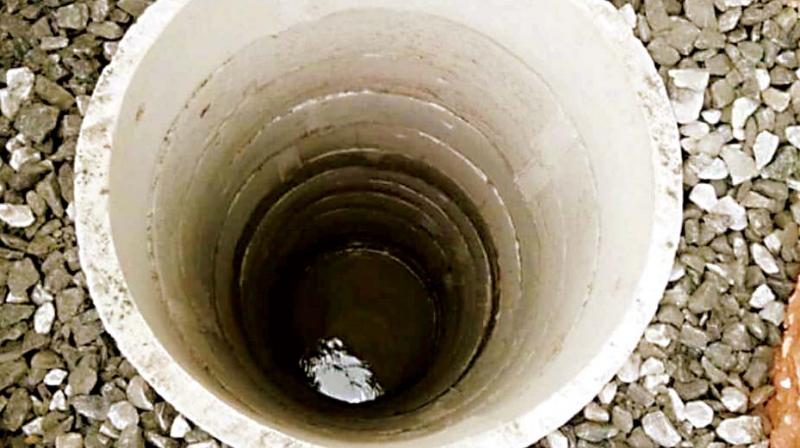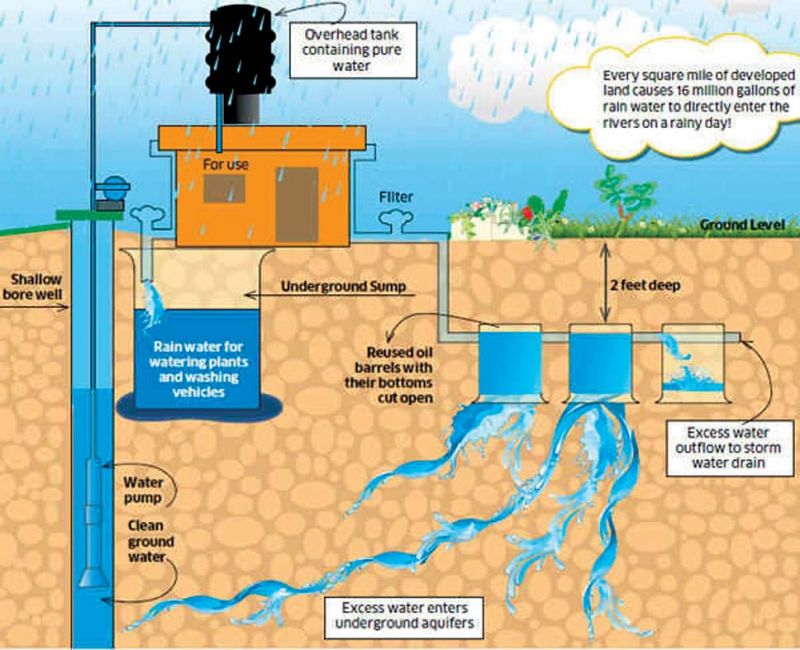Concrete drains! No solution for water woes

Cauvery water supply is running out. Borewells are running dry. Bengaluru's water crisis looms large. Private tankers are a vastly more expensive option but the demand is so high that water is unavailable, no matter how much one is willing to pay. The problem has been exarcebated in the last six months, after stormwater drains across the city were laid with concrete. Runoff from these drains now floods the roads, with the concrete preventing it from recharging the groundwater tables and entering rainwater silos. The city’s people and its trees will soon be starved of water. Why has Bengaluru been allowed to languish at the hands of corrupt contractors, asks Aksheev Thakur
The city, which has for long depended on Cauvery water, is now looking for other ways to add to its water supply as its population increases. Its knee-jerk reaction to a water shortage has always been to sink a borewell to meet the shortfall. But this has left it facing a worse crisis than before as the borewells are sunk randomly, leading to over-exploitation of Bengaluru's groundwater.

So bad is the situation that in peripheral areas of the city, people find no water even if borewells are sunk to a depth of 900ft to a 1,000 ft. Cashing in on their plight, private water suppliers make a killing by auctioning water at a high price and treating the affected localities as their fiefdoms, sometimes even leading to a "water war" as other suppliers try to encroach on their "territory."
Former executive director of Greenpeace India, and a water expert, Kshitij Urs, regrets that although the city finds itself in the same predicament every summer, there is hardly any planning by the authorities to avert it.
“They have no plans at all. Every year the crisis looms over the city and the administration’s only reaction is to get water for it from where it can,” he observed with disgust, wondering why it didn't do more to promote Rain Water Harvesting (RWH) . Although mandatory for units on 30 x 40 sq. ft sites, only 1.2 lakh of the eligible properties in the city have adopted it as of now.
Mr Urs believes more Bengalureans will go in for it if more awareness is created about the importance of saving rain water for more difficult times.
“The topography of the city is such that there is huge scope for harvesting rain water. The run-off on the streets should also be collected into ponds. In fact, the government should create an eco-system for it,” he suggested.
While some people find RWH costly and insist that government institutions should set an example by going in for it first, he says this problem can be solved by government subsidy for the installationd.
“Yes, RWH has become costly. So the government should subsidise its installation. It is, however, not impossible to install even now,” he added, clearly hoping Bengalureans will wake up before it is too late.

